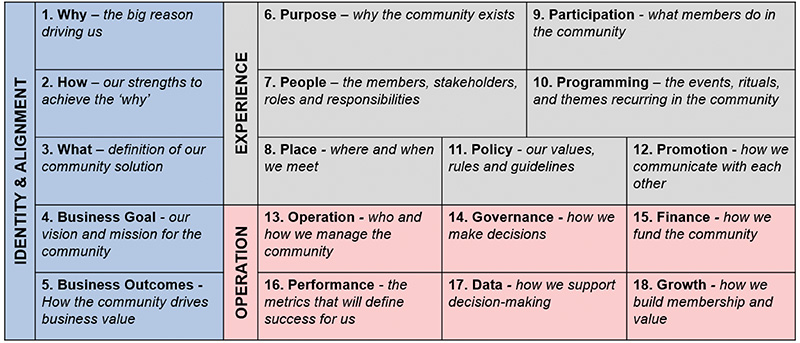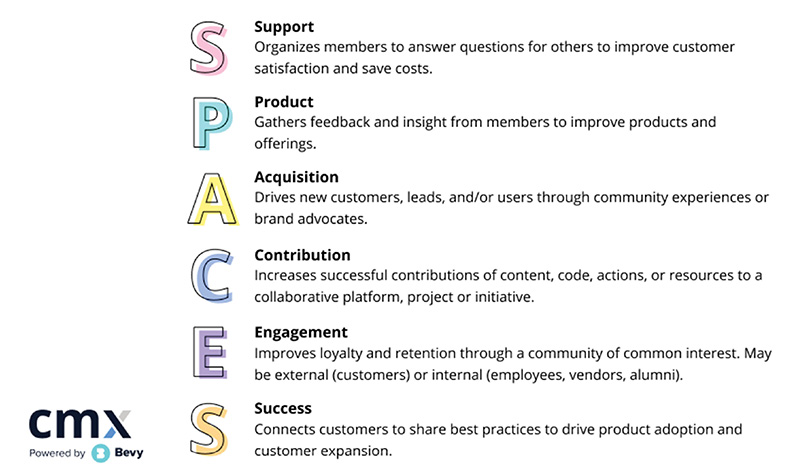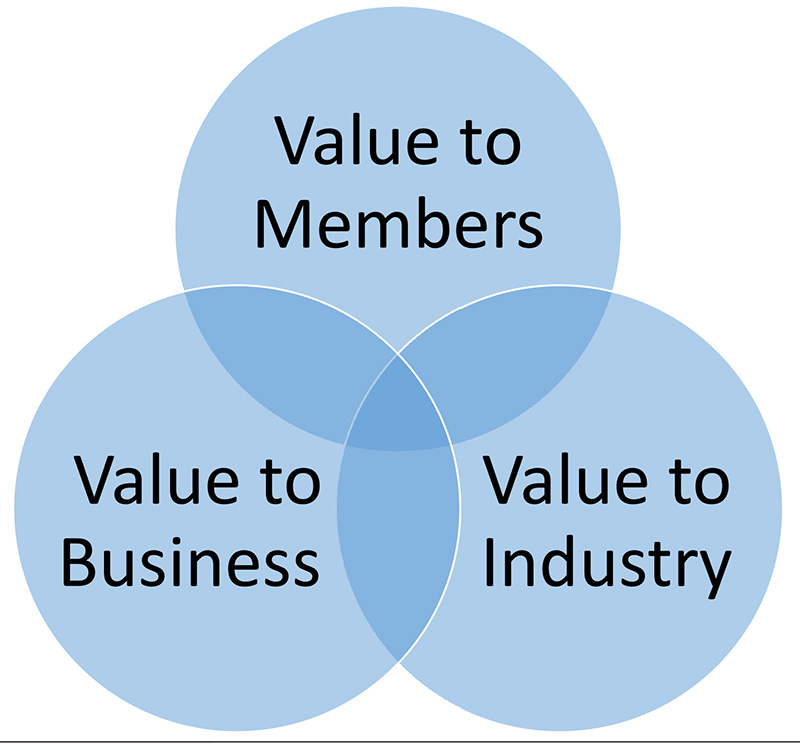August 2022, Vol. 249, No. 8
Features
Virtual Communities Transforming Pipeline Competence Development
By M. Unger, ROSEN Group and J. Weightman, Knovolution Ltd., UK
Success in the pipeline industry is predicated on a blend of safety, engineering excellence and innovation. These critical success factors rest in the hands of the workforce and depend on decisions made and actions taken.
It is no secret that skills shortages, the “great crew change” and the VUCA2 world are all putting industry success at risk. When it comes to the challenge of pipeline competence development, the obvious solutions are to improve training and development, capture and transfer the knowledge of those with experience, and speed up learning cycles to tackle current project challenges.
Yet companies tend to default to regular approaches to develop a workforce that must operate as effectively as their predecessors in these extraordinarily novel times.
The industry risks falling behind in knowledge assurance3. Failing to support knowledge assurance now will leave the next generation of pipeline engineers ill-equipped to deal with the projects of the future, in particular around energy transition competencies. It is vital to help the workforce maintain core competencies – and discover new ones – to sustain industry performance.
The complexity of our modern world, particularly following the Covid-19 pandemic, calls for new forms of expertise, creativity, skillsets and collaboration to drive progress. It is time for the industry to break from tradition and reimagine its approach to supporting how people learn – so that they, in turn, can act and make effective decisions.
We are hardwired as humans to self-organize into communities because we rely on each other for the division of cognitive and physical labor to survive and thrive.
Virtual communities offer an effective way to speed up connection and collaboration to optimize upskilling the workforce, and ROSEN is developing a space to do so. Companies no longer need to shoulder the burden of competence development alone.
This article highlights the untapped potential of virtual communities as a contemporary and sustainable strategy to transforming pipeline competence development, supporting industry knowledge assurance, developing organizational capability and creating the next generation of experts. The article also tells the story of the development of The Competence Club Connects virtual community initiative, from conception to implementation.
Virtual Communities
A community can be defined as “a group of people with shared values, behaviors, and artifacts” [2]. There are various types of communities, including communities of interest (e.g., fans of television shows), communities of place (e.g., geographically bound around a topic) and communities of practice (e.g., professions engaging in specific activities).
Communities of practice are particularly fitting for competence development; they are described as “groups of people who share a concern or a passion for something they do and learn how to do it better as they interact regularly” [3].
Communities can exist physically, online or hybrid. They can be internal or external, or they can span a range of boundaries to an organization. Regardless of location, size or type, the foundation of a community is relationships. It is the interaction through these relationships that creates value.
In virtual communities, technology supports the establishment of the meeting space and enables interaction. The goal is to create a psychologically safe space4 where members experience a sense of community and fulfilment of needs, which drives value creation, as indicated by current virtual interaction trends (see Case Study: Vision).
Member Value
Communities hold the space for knowledge sharing, personal development and social connection. They feature tools and activities for discussion, networking, dissemination and creation of content, expertise location, attending events, and member profiles, for example.
Members generally gravitate towards a community for the utility (content, experts, answers, learning, opportunities), and they stay for the unity (identity, sense of belonging, relationships, recognition) [5].
Effective strategies (see Case Study: Strategy) focus on building a sense of community through four member-related factors [6]: membership (identity, trust, commitment), influence (sense of mattering to each other), fulfilment of needs (problems solved, rewards) and shared emotional connection (experiences, values, concerns).
Individuals gain social, cognitive and professional value from communities, such as timely access to expertise, a ready-made sense-making network, quick access to resources, social support, and a place to be recognized and grow.
Employers who let employees engage in communities gain advantages in training and development, deeper connections to industry, and the ability to leverage the collective cognitive value to support business operations.
Industry Success
The networking effect within and between discrete communities has extensive benefits in boosting industry success. Overall, the community construct is integral to tackling industry risk caused by cognitive factors such as lost knowledge, time to competence and a dearth in expertise.
If the workforce does not have the knowledge, how can they make the right decisions? If the workforce lacks competence, how can they take effective action? If organizations lack capability, how can they serve society?
Communities are a breeding ground for knowledge sharing, sense-making5, generating social capital6 and accessing scarce expertise, which ultimately optimizes workforce and organizational performance.
In 2021, research by The Community Roundtable showed that the energy sector is behind other industries when it comes to community adoption, making up only 1% of the survey demographics [9].
The World Economic Forum [10] reports that the energy sector needs to reinvent itself and highlights collaboration as a key to unlocking transformational gains for the sector. Industry collaboration can be augmented through the implementation of communities, and the industry already has the essential ingredients for success: shared identity and purpose, diversity, engaged people, a wealth of experiences, and a future of problems to be solved.
Communities, shaped by organizations and peer groups, are an indispensable solution to ameliorating the intellectual burdens faced by the industry and an investment in safeguarding its future.
Business Advantage
Community success being the one thing that cannot be copied, it is the new competitive advantage [5].
Communities are changing the way the world works and how businesses operate [11]. The future belongs to purpose-driven, resilient and networked organizations that can make their customers’ dreams come true.
Virtual communities act as watering holes that connect businesses and customers in a mutually beneficial space. They elevate an organization’s gravitas when it comes to customer success, relationship-building, brand loyalty and service delivery [12].
Outside the energy industry, companies embrace community as a new business model. It is a holistic strategy which helps organizations to scale, lower costs, increase loyalty, accelerate digital transformation, innovate and create new revenue streams [13].
The visibility of online communities driven by the Covid-19 pandemic has shifted perceptions. Research conducted in 2021 showed that 83% of executives had a positive perception of community potential, leading to increased engagement and support. Table 1 presents further notable statistics from this research [9].
Case Study: Designing A Virtual Community
ROSEN has become an agent of change for industry knowledge-sharing and professional development.
Since 2016, the flagship education initiative, The Competence Club, has provided a range of solutions to support over 2,800 members in developing competence[14]. The Competence Club started by providing courses and has evolved into a worldwide virtual community.
At the core of the community is the learning network, which supports members through courses, industry-accredited certification, online resources and virtual meetups. The initiative has supported young pipeline professionals, in particular, engaged with and recruited industry experts, and addressed customers’ bespoke learning needs.
To support this global member network, it has also ensured the experience is localized to key regions and customer groups.
Vision
The growing trend toward social learning, prompted by the onset of the Covid-19 pandemic, presented an opportunity to evolve The Competence Club. The focus was on creating a new, interactive, value-driven community experience that puts the “social” back into the way people learn, connect and do business online: The Competence Club Connects. The vision centered around four main themes: engagement, learning, recognition and networking.
Strategy
Using various community development frameworks, the strategy and roadmap was defined. Instead of revamping the technology platform straight away, the initial stages of the roadmap focused on developing a sense of community, community management and business/member alignment.
Fundamental decisions were made around community identity, business integration, member value and growth. Key strategic considerations were how to engage members in an industry somewhat reluctant to embrace community participation, what the community focus should be, and how to attract and onboard members.
To define the community’s identity and business/member alignment, ideal member personas were defined, and 2 key frameworks by CMX were selected. The SPACES Model (Figure 1) helped to define the business outcomes for the virtual community.
The 7P’s of Community Experience Design (Figure 2) [5] [16] helped to define critical components to implement a virtual community.
The full strategy was then presented in the community strategy canvas (Figure 3), which was inspired by similar frameworks in the community management field [17] [18].
Roadmap
The overarching community growth strategy was shaped by The Community Maturity Model[19]. It highlights four growth stages as communities evolve (Hierarchy, Emergent Community, Community, Networked) and eight competencies that are integral to any organization intent on building a successful community (strategy, leadership, culture, community management, content and programming, policies and governance, tools, and metrics and measurement).
Since developing the strategy in 2021, ROSEN has been establishing the virtual community by shaping the community identity, holding online meetups, fostering deeper connections with existing members and attracting experts.
The community management team is currently evolving the online community platform to provide more opportunities for asynchronous networking, virtual engagement, rich content, mentoring and wider access to expertise.
The virtual community is on track to becoming a central industry-recognized hub that generates individual, business and worldwide industry value (Figure 4).
Conclusion
The future is radically different from what everyone expected. As the world suddenly finds itself in the “next normal,” people have universally adapted the way learning takes place and how they connect with each other to get the job done.
While traditional training approaches to developing competence still hold merit, social and online learning is a primary channel for individuals to learn rapidly and effectively.
The way learning happens outside the boundaries of the organization – through social constructs and engagement – is more in line with how people naturally build competence; as such, it influences how expectations are shaped when it comes to professional development.
The energy industry is behind the times in reaping the benefits of a socially networked profession. Paying lip service to training and development – or failing to innovate the approaches to complement how adults learn – self-sabotages the industry and the companies that drive it. Unshackling from traditional mindsets is required to empower people and organizations to deliver the projects of the future.
Virtual communities offer new opportunities to immortalize experience, leverage global expertise and cultivate the next generation of pipeliners. They are much more than a discussion forum – they are fundamentally revolutionizing how individuals and businesses develop their competency in order to make progress.
References:
- Lambe, Knowledge Retention or Knowledge Assurance?” August 2007. http://www.greenchameleon.com/gc/blog_detail/knowledge_retention_or_knowledge_assurance/
The Community Roundtable, “The New Community Manager Handbook. 21 Lessons from Community Leaders.” 2022. https://communityroundtable.com/community-manager-role/new-community-manager-handbook/
- Wenger, “Introduction to Communities of Practice.” 2015. https://wenger-trayner.com/introduction-to-communities-of-practice/
- Geraghty, “What is Psychological Safety?” August 2016. https://psychsafety.co.uk/about-psychological-safety/
- Spinks, “The Business of Belonging. How to Make Community Your Competitive Advantage.” Wiley, 2021.
- W. McMillan and D. M. Chavis, “Sense of Community: A Definition and Theory.” Journal of Community Psychology 14(1):6-23. January 1986.
- Snowden, “What is Sense-making?” June 2008. https://thecynefin.co/what-is-sense-making/
- Young, “Personal Knowledge Capital. The Inner and Outer Path of Knowledge Creation in a Web World.” Chandos Publishing, 2021.
The Community Roundtable, “The State of Community Management 2021. Communities Accelerate Impact.” 2021. https://communityroundtable.com/what-we-do/research/the-state-of-community-management/socm-2021/
- Ashraf, P. Caruso and P. Pensado, “The oil and gas sector must reinvent itself. This is how it could be done.” The World Economic Forum, December 2020. https://www.weforum.org/agenda/2020/12/how-to-reinvent-the-oil-and-gas-sector/
The Community Roundtable, “The State of Community Management 2020. Changing the Way the World Works.” 2020. https://communityroundtable.com/what-we-do/research/the-state-of-community-management/the-state-of-community-management-2020/
Hivebrite, “How Can Virtual Communities Create Value for Business?” November 2020. https://blog.hivebrite.com/how-can-virtual-communities-create-value-for-business
Vanilla, “20 Stats About the Benefits of Online Community Forums.” May 2022. https://blog.vanillaforums.com/20-statistics-about-the-benefits-of-online-communities
- Unger, P. Hryciuk, D. Buckley and P. Hopkins, “Competence Development and Assessment: A Methodology and Case Studies for Pipeline Integrity Engineers.” Pipeline Pigging and Integrity Management Conference 2022. George R. Brown Convention Center, Houston, TX, February 2022.
CMX, “The SPACES Model: The Framework for Defining Your Community’s Business Value.” February 2021. https://cmxhub.com/the-spaces-model/
CMX, “The 7P’s of Community — A Simple Framework for Building Belonging.” September 2018. https://cmxhub.com/the-7ps-of-community/
CMX, “The CMX Community Strategy Canvas: A Simple Planning Tool for Community Professionals.” February 2017. https://cmxhub.com/the-cmx-community-strategy-canvas/
The Community Canvas, “A framework to help you build meaningful communities.” 2017. https://community-canvas.org/#about
The Community Roundtable, “Community Maturity ModelTM.” 2009. https://communityroundtable.com/what-we-do/research/community-maturity-model/










Comments